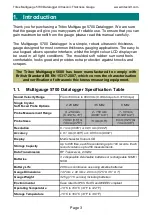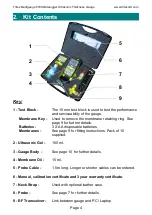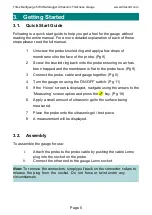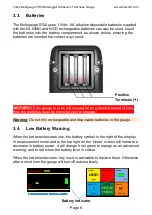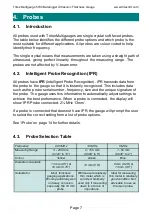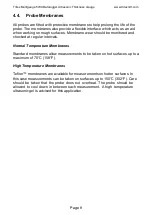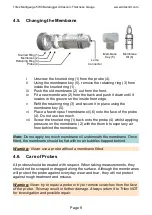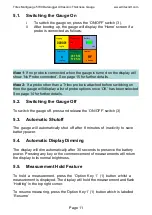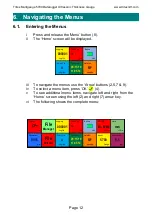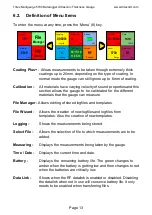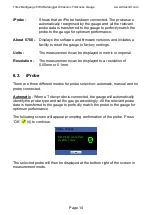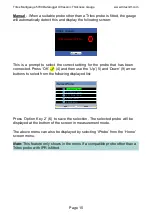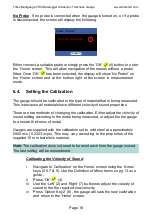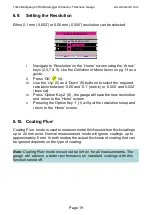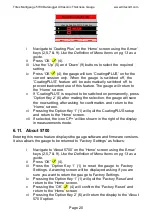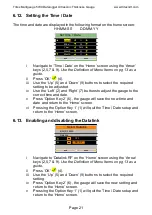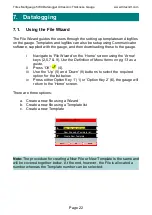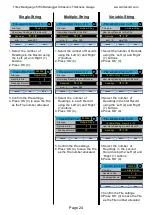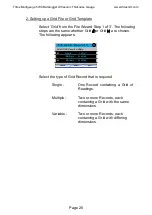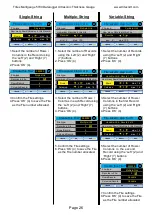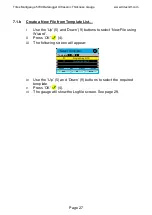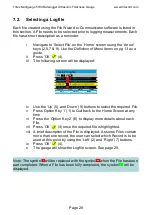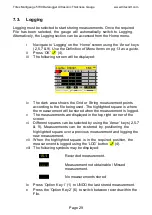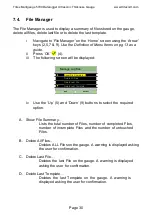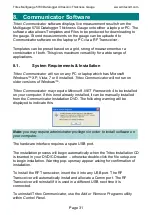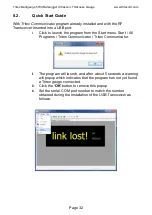
Tritex Multigauge 5700 Datalogger Ultrasonic Thickness Gauge www.tritexndt.com
Page 17
Calibrating to a Known Thickness
i
Navigate to ‘Calibration’ on the ‘Home’ screen using the ‘Arrow’
keys (2,5,7 & 9).
Use the Definition of Menu Items on pg 13 as a
guide.
ii
Press ‘OK’ (4).
iii
Place the probe on a piece of material of a known thickness such
as the test block supplied with the kit.
iv
Adjust the measurement displayed to the known thickness
using the ‘Left’ (2) and ‘Right’ (7) buttons.
v
Press ‘Option Key 2’ (6), the gauge will save the new calibration
and return to the ‘Home’ screen.
6.5.
Velocity Table
(approximate values)
The given values are in certain cases strongly dependent on the alloy, heat
treatment, manufacturing and processing and are therefore only approximate
standard values. They are given here as a guide only.
Reference:
Mathies, Klaus (1998), Thickness Measurement with Ultrasound, Berlin: German Society of
Nondestructive Testing.
Material
Velocity -
m/s
Velocity -
in/µs
Aluminium
Rolled
Duraluminium
6200 -6360
6420
6320
0.2441 - 0.2504
0.2528
0.2488
Bronze (5%P)
3531
0.1390
Copper
3666 - 4760
0.1443 - 0.1874
Glass, Plate
5766
0.2270
Inconel, Forged
7820
0.3079
Lead
2050 - 2400
0.0807 - 0.0945
Steel, Mild
Supplied Test Block
5890 - 5960
5900 approx.
0.2319 - 0.2346
0.2323 approx.
Steel, Stainless
10 Cr Ni 18 8, ann
5530 - 5790
5530
0.2177 - 0.2280
0.2177
Steel, Tool
C105 Annealed
C105 Hardened
5490 - 5960
5854
0.2339 - 0.2346
0.2305
Tin
3210 - 3320
0.1264 - 0.1307
Titanium
5823 - 6260
0.2293 - 0.2465
Zinc
3890 - 4210
0.1531 - 0.1657

